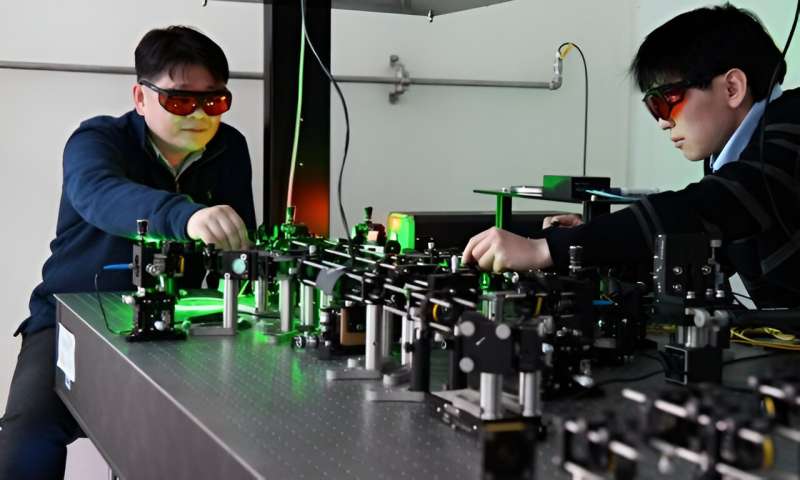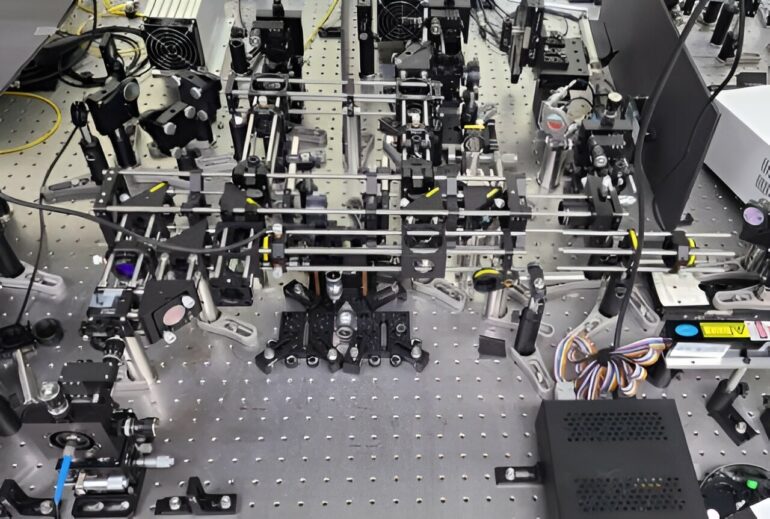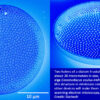The Korea Research Institute of Standards and Science (KRISS) has developed a novel quantum sensor technology that allows the measurement of perturbations in the infrared region with visible light by leveraging the phenomenon of quantum entanglement. This will enable low-cost, high-performance IR optical measurement, which previously accompanied limitations in delivering quality results.
The work is published in the journal Quantum Science and Technology.
When a pair of photons, the smallest unit of light particles, are linked by quantum entanglement, they share an associated quantum state regardless of their respective distance. The recently developed undetected photon quantum sensor is a remote sensor that utilizes two light sources that recreate such quantum entanglement.
An undetected photon (idler) refers to a photon that travels to the target of measurement and bounces back. Instead of directly measuring this photon, the undetected photon sensor measures the other photon of the pair that is linked by quantum entanglement to obtain information about the target.
Quantum sensing based on undetected photons is a nascent technology that has only been realized in the last decade. With the technology still at its early stages, the global research community continues to engage actively in the development race. The undetected photon quantum sensor developed by KRISS is differentiated from previous studies in its core photometric devices, the photodetector and interferometer.

Researchers performing optical alignment with the pump laser of the composite interferometer experiment device. © Korea Research Institute of Standards and Science (KRISS)
A photodetector is a device that converts light into an electrical signal output. Existing high-performance photodetectors were largely limited in their applications to the visible light bandwidths. While wavelengths in the infrared region are useful for measurements in diverse applications across many fields, there were either no available detectors or only detectors with poor performance.
This latest KRISS research has allowed the use of visible light detectors to measure the light states in the infrared band, enabling efficient measurement without requiring costly and power-consuming equipment. It can be used in a wide range of applications, including the non-destructive measurement of three-dimensional structures, biometry, and the analysis of gas compositions.
Another critical element in precision optical measurement is the interferometer, a device that obtains signals by integrating multiple rays of light that travel through separated paths. Conventional undetected photon quantum sensors mainly use simple Michelson interferometers that adopt simple light paths, restricting the number of targets that can be measured.
The sensor developed by KRISS implements a hybrid interferometer that can flexibly change the light paths depending on the target object, greatly improving scalability. Thus, the sensor is suitable for adaptation to various environmental requirements as it can be modified based on the size or shape of the measured object.
The Quantum Optics Group at KRISS has presented a theoretical analysis of the factors that determine the key performance metrics of the quantum sensors and empirically demonstrated their effectiveness by using a hybrid interferometer.
The research team reflected light in the infrared band onto a three-dimensional sample to be measured and measured the entangled photons in the visible bandwidth to obtain the sample image, including its depth and width. The team has successfully reconstructed a three-dimensional infrared image from measurements made in the visible range.
Park Hee Su, Head of the Quantum Optics Group at KRISS, said, “This is a breakthrough example that has overcome the limits of conventional optical sensing by leveraging the principles of quantum optics.” He added that KRISS “will continue with follow-up research for the practical application of the technology by reducing its measurement time and increasing sensor resolution.”
More information:
Eun Mi Kim et al, Quantum optical induced-coherence tomography by a hybrid interferometer, Quantum Science and Technology (2023). DOI: 10.1088/2058-9565/ad124d
Provided by
National Research Council of Science and Technology
Citation:
Novel quantum sensor breaks limits of optical measurement using entanglement (2024, June 10)



